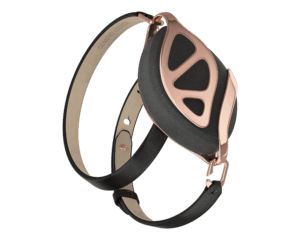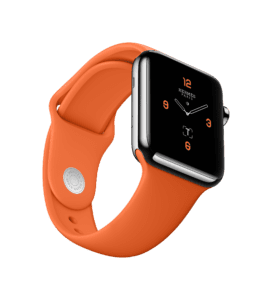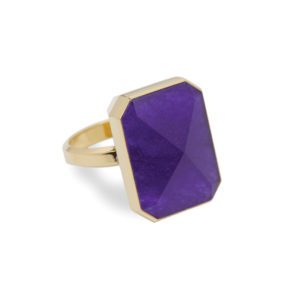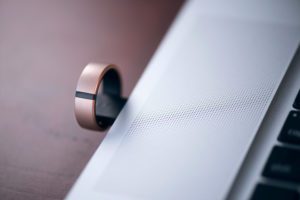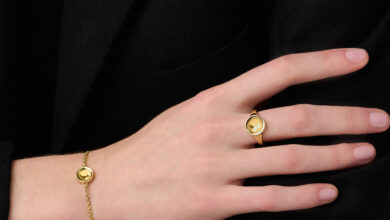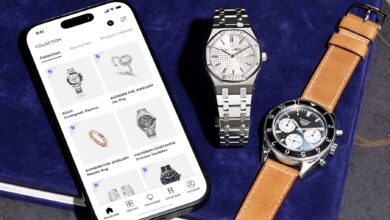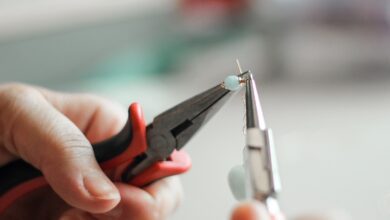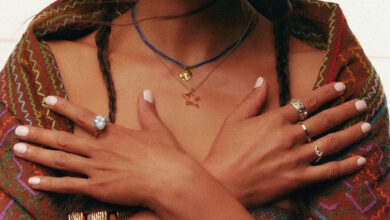The rise of wearable tech – how the market turned luxury
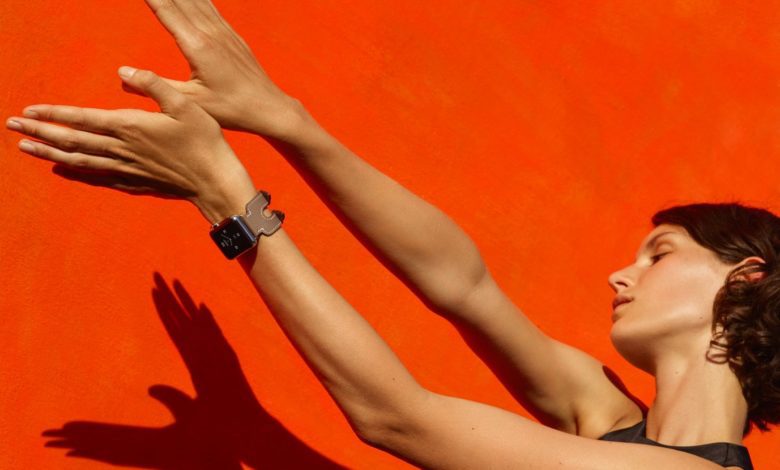
Register to get 1 free article
Reveal the article below by registering for our email newsletter.
Want unlimited access? View Plans
Already have an account? Sign in
Wearable tech has in recent years become mainstream, but it doesn’t always look great as a fashion item. As more brands try to enter the space with ‘luxury’ wearable tech pieces, SHEKINA TUAHENE speaks to patent lawyer MARK MARFE about how these products come to be and why there is such a desire for them in the market.
Wearable tech is nothing new; from smartphone compatible accessories to wrist worn step trackers, for every aspect of our daily lives there seems to be a piece of wearable tech that can accommodate it.
However, as the market has grown and people have begun to wear them on a daily basis, we have now seen a new influx of luxury and visually pleasing items which also have a certain level of functionality. It makes sense as if one wants to wear a FitBit on a daily basis, it won’t be long until it is realised that the traditional FitBit doesn’t flatter a smart suit or a cocktail dress.
But with an increasing number of luxury brands teaming up with technology firms to make their own offerings, it is something we may expect to see more of in years to come. A Forbes article looking at the future of wearable technology predicted that the industry will be worth $34bn by 2020. What this type of accessory is what it is used for is constantly evolving. Early introductions to wearable tech were either watch-size versions of your mobile phone or trackers for sleep and movement. Now, tech companies are pairing up with luxury brands to bring out products which perform tasks you weren’t even aware you needed.
One of the newcomers to the market is the Helios Smart Ring, which monitors the amount of sunlight you get in a day and your vitamin D levels. It tells you when to go outside as well as when you’ve had enough light exposure – reducing the risks of sun damage. While many may tend to spend more time worrying about diets and exercise levels rather than thinking about vitamin D, being deficient has been associated with childhood asthma, cancer, weaker bones, increased risk of death from cardiovascular disease and the ability to think clearly.
The company behind the ring, E-Senses, is currently seeking funding for the new offering on IndieGogo and pre-orders of the ring are available on the website before its release. As many tech-based companies are venturing into jewellery, existing jewellery brands are becoming aware of the growing segment, teaming up with tech to help them design a similar product. Similarly, emerging tech companies are offering sleek, attractive products.
However, the linking of a tech company with a jewellery brand to create a product like this – like any other contract – does not happen easily. Mark Marfe, senior associate at Hogan Lovells law firm, regularly oversees such contracts and has some insight to how they are conducted and why luxury wearable tech may be becoming more popular.
With the law company dedicating much of its time “looking at issues around digital health and wearable technology and thinking about the various ways in which it impacts those products in that industry”, it has learned some of the reasons why this particular type of jewellery is making a mark on the industry.
“There’s been a very noticeable increase in the mashing up of clothing and jewellery and having technology based application,” Marfe points out. “It is a very lucrative market for companies to get involved in.” He notes that with products such as the FitBit and Apple Watch dominating the market, it’s natural that brands would see the success of wearable tech and work to create an alternative offering.
“There’s a clear appetite in the market for wearable technology and if you can combine that with your own existing brand that’s clearly going to be a good selling point for luxury brand companies like jewellers and fashion houses.”
Seeing as many wearables are used as either a constant health aid or an electronic assistant, Marfe explains the move to a more luxury look and feel as making “more sense”. “It’s aesthetically pleasing,” he says, “while having that added attraction of being a wearable technology which is being designed to be worn continuously rather than just when you’re exercising.”
In terms of the Helios ring, its design stands out because of that simple fact – it’s a ring. The market has slowly become accustomed to seeing wearables in wristwear that other types of wearable tech are still seen as fresh and new. It also helps to combat some of the issues that may come along with wearables, as it tends to be more discreet as well as make room for the wrist piece one may already own. Marfe notes: “It allows it to be worn with other things and another one is it makes it a bit different and I think that difference makes an attractive product.”
Other forms of this kind of jewellery have popped up as the trend expands into the luxury sector; wearables now come as bracelets and necklaces as well as watches and rings and have a sleeker more sophisticated appearance. For example, the Bellabeat health tracking jewellery is a leaf-shaped pendant which can be worn as a necklace, bracelet or clip and monitors the wearer’s sleep and movement. Beyond this, the device connects to an app on the user’s phone and provides guided meditation, predicts stress levels and monitors the menstrual activity. It goes further than simply making sure one is moving enough with the promise of being an aid for the “body and mind”.
On the other hand, there are products which don’t aim to better or monitor your health, but instead keep you safe. The Mangos ring sends an SOS message and a map location to the wearer’s friends at the press of a button allowing them to discreetly call for help. The Nimb ring works similarly with a panic button that calls family, friends, emergency services and the Nimb community.
While there are companies creating and coming out with their own tech offerings, alternatively existing luxury brands are increasingly teaming up with tech savvy companies to try their hand in the market. Marfe foresees this continuing to happen in the industry, saying: “We’ll see more collaborations in the market but also more jewellery and fashion companies perhaps looking to develop this technology in house. Or at least perhaps acquiring a smaller tech company in order to be able to have access to this technology themselves.”
So far, we have seen the Apple Watch collaborate with Hermes for its luxury offering, while the Michael Kors Access smartwatch is Android compatible. Marfe explains that while some designer brands may not have the “technological ability”, combining their “marketing clout” with an emerging or existing tech brand can push the product further.
“There’s clear advantages from the tech company’s side, it raises their profile and allows them to fund new projects. [For the luxury brand] gives it a way to accelerate the research for them, which means they don’t have to employ guys to do this for them. It also means they’ll be able to steal some of the market off their competitors.” He adds, “It’s a comparatively low cost way of doing these kinds of things.”
While collaborations may currently be the preferred way to release such products, Marfe envisions that luxury brands will soon take it upon themselves to create luxury wearable tech in-house, as the demand for it grows. “I think we’ll see more collaborations in the market but also more jewellery and fashion companies perhaps looking to develop this technology in-house. Or at least acquiring a smaller tech company in order to be able to have access to this technology themselves.”
Some of the New Luxury Wearables on the Market
Helios
The Helios ring is a vitamin D tracker which works to maximise your vitamin D intake whilst avoiding sunburn. It is equipped with a “high accuracy” UV sensor and takes note of the user’s skin type to personalise usage. It shows you how many units of vitamin D you are taking in and updates sun visibility by the minute according to factors like clouds and pollution. It provides regular statistics and works towards a goal of obtaining 200.000 units of vitamin D a year.
The Helios ring launches in August.
Bellabeat
Bellabeat launched in 2014 as brand to help women track their overall health and wellness. The Bellabeat Leaf is a screen-less, button-less leaf shaped pendant which can be worn on a chain, on the wrist or as a clip. It connects to an app on iOS and Android devices and tracks the user’s steps, sleep, period and stress levels and offers mediation sessions to improve wellbeing.
Apple Watch Hermes
The Apple Watch Hermes launched in September 2016 to give the Apple Watch Series 2 a more sophisticated edge. The Hermes-designed leather straps are made to be compatible with this particular model of Apple Watch giving the timepiece a new air of “elegant, artful simplicity”.
Prices start from £1,149.
Senstone
Similar to the Bellabeat Leaf, the Senstone is a small stone-shaped device which can be worn around the neck, wrist or as a clip. The Senstone is a voice recorder which connects through a smartphone app and works as a vocal-enabled assistant to create to-do lists or write down ideas.
The device is still crowdfunding but is priced at $145.
Ringly
The Ringly is a luxe style ring that tracks the user’s activity. It also offers guided meditation and delivers phone notifications. To add to the high end feel of the wearable tech, its jewellery is plated with 14carat gold and piece is set with a semi-precious or precious stone, ranging from moonstone to purple jade. It also comes in bracelet form.
Prices range from $125 to $165.
Mangos
The Mangos ring is a discreet panic ring made to keep you safe in an emergency. It works by texting your friends and SOS message and sharing your location when you press down on it for three seconds. It then creates a shortlink of your location which can be shared with authorities. It doesn’t come with nor require a charger as the battery runs out after 400 uses.
The ring is still in the Kickstarter stages.
Motiv
The Motiv ring is a wearable fitness and sleep tracker which has a lightweight design to “seamlessly” fit into the wearer’s everyday life. Its waterproof quality means there is no need to remove the ring for convenience and it charges on the go giving an ease of use.
The Motiv ring retails for $199.


